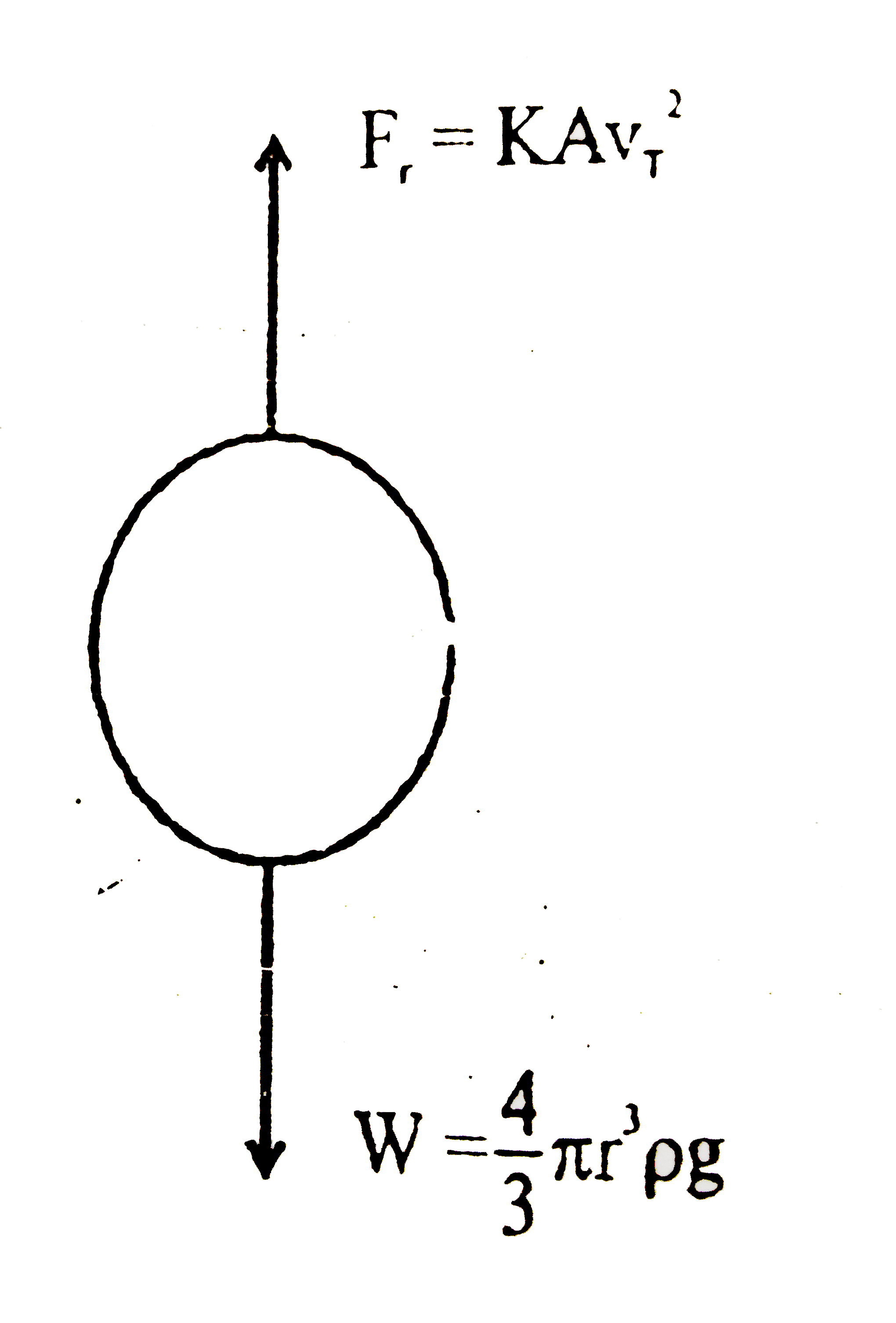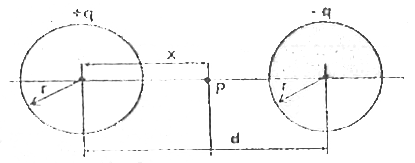A solid metallic sphere of radius r is allowed to fall freely through air. If the frictional resistance due to air is proportional to the cross-sectional area and to the square of the velocity, then the terminal velocity of the sphere is proportional to which of the following ?
r
The correct Answer is:D
At terminal velocity

Topper's Solved these Questions
Similar Questions
The rate of volume flow of water through a canal is found to be a function of the area of cross-section of the canal and velocity of water. Show that the rate of volume flow is proportional to the velocity of flow of water.
View SolutionTwo metal spheres of radius r have centers at a distance d apart in air. Find the capacitance of the system.
 View Solution
View Solution
Knowledge Check
- Question 1 - Select One
Metallic sphere of radius R is charged to potential V. Then charge q is proportional to
AVBRCbothDNone - Question 2 - Select One or More
The viscous force acting on a solid ball of surface area. A moving with terminal velocity v is proportional to
AABA1/2CVDV1/2 - Question 3 - Select One
Amount of heat radiations emitted by a solid sphere of radius r at any temperatures is proportional to the following .?
ArBr2Cr3Dr4
A small sphere falls from rest in a viscous liquid. Due to friction, heat is prodced. Find the relation between the rate of production of heat and the radius of the sphere at terminal velocity.
View SolutionA small steel ball of mass m and radius r is falling under gravity through a viscous liquid of coefficient of viscosity η. If g is the value of acceleration due to gravity. Then the terminal velocity of the ball is proportional to (ignore buoyancy)
View SolutionTwo identical solid copper spheres of radius R placed in contact with each other. The gravitational attracton between them is proportional to
View SolutionTwo solild spheres manufactured of the same material freely fall down in the air. One sphere has a dimeter twice as large as the other. The force due to air resistance is proportional to the cross-section area of a moving object and is quadration function of the speed of an object and is quadration function of the speed of an object. In sometime after the beginning of motion in the presence of air resistance, the velocity of each sphere become constant. It is called the terminal velocity vbig/vsmall is
View SolutionA spherical metal ball of mass m and radius (r) is falling through a viscous medium. The value of its terminal velocity is proportional to
View Solution

